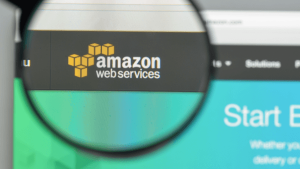- May 16, 2019
- Erwann Couesbot
- Reading Time: 3 minutes

If your organization is considering an AWS Enterprise Discount Program (EDP), be sure to make these three commercial asks to ensure you achieve better-than-standard price transparency and predictability in your agreement.
What is an AWS EDP?
An AWS EDP is a private pricing program that provides a discount to organizations in exchange for a prepaid, annual consumption commitment. The size of the discount scales with your committed annual spend and term length. Under an EDP, your prepayment is run down as you consume AWS services. This program essentially adds a commitment to AWS’s flexible, pay-as-you-go pricing model in exchange for a small level of discounting.
EDP only applies to AWS’s on-demand purchasing model but can be used for all eligible AWS’s services including:
- Amazon Elastic Compute Cloud (EC2)
- Elastic Block Storage (EBS)
- Amazon Simple Storage Service (S3)
- Amazon RDS
- Amazon DynamoDB
- AWS Lambda
- Amazon CloudFront
- Amazon S3 Glacier
- Amazon Snowball
Prior to entering the contracting phase, request that AWS provides the following in your EDP proposal:
1. Complete Visibility into Discounting Tiers
As mentioned above, the discount you achieve with an EDP is tied to two things: annual prepayment commitment amount and term length.
We recommend that you ask AWS to include the volume discounting and pricing tiers associated with each prepaid consumption band in your proposal. This should clearly show the associated discounting for each designated threshold, including the consumption bands above and below the band that your forecasted annual spend falls within. You may find that it is more cost-effective to make use of more AWS services and commit to a higher prepayment amount in order to move into the next tier and receive a higher discount. It will also be beneficial to have this information on hand in the event that your needs change down the road.
Similarly, you should also request the discounting you would receive for multiple commitment terms (e.g., a three-year term or five-year term) and not just the term length you are initially considering.
2. A Grace Period
An EDP is most beneficial for organizations that can ensure they will consume the amount of services they forecasted and prepaid for. There are downsides to failing to accurately forecast your annual consumption amount. If you don’t spend all of your prepaid commitment, you still owe AWS the amount you committed to. On the other hand, if you use all of your prepayment before the term ends, you would then pay the on-demand list price for all services you use until the end of the term.
Since the on-demand pricing offers the most flexibility, it is more expensive than AWS’s reservation-based pricing models (e.g., Reserved Instances, Dedicated Hosts, etc.). To lessen the period of time you would potentially need to pay the on-demand list price, ask AWS to include a grace period in your EDP agreement that would extend your negotiated EDP discount rate beyond your prepaid amount for a specified period of time.
3. Enterprise Support Pricing and Services
There are a handful of requirements an organization must meet in order to use an AWS EDP. One of those requirements is enrolling in AWS’s Enterprise Support for the duration of your committed term. Therefore, it is important to ask AWS to provide you with a clear understanding of its Enterprise Support pricing structure and what is included in this support plan.
a. Enterprise Support Pricing
Enterprise support pricing is calculated as a percentage factor of your annual committed consumption. Since this is the case, request that AWS provides the specific percentage associated with multiple consumption bands in addition to your actual committed consumption.
b. Included Support Services
Lastly, you should request a detailed list of the services included in Enterprise Support as well as the specific response times AWS is willing to commit to for each case severity level (e.g., critical, urgent, high, etc.). This information should be included in your proposal.
These key commercial considerations are three of the most crucial EDP must-haves you should request prior to entering the contracting phase with AWS. If you decide that a reservation-based model better fits with your AWS consumption needs, you are likely to receive a higher level of discounting than what you could achieve through an AWS EDP. However, you will not benefit from the flexibility provided by the on-demand purchasing model.
Knowing what needs to be brought to the negotiation table can be an overwhelming task. Thankfully, UpperEdge helps clients negotiate with the top IT vendors every day. If you are ready to think more strategically about your cloud negotiation strategy, contact us today to learn how we can help.
Related Blogs
Hyperscaler (GCP, Azure, and AWS) Commitment Discounts
Lower Your Hyperscaler Costs with Credits and Incentives
6 Risks to Avoid in Your AWS, GCP, and Azure Negotiations
About the Author
